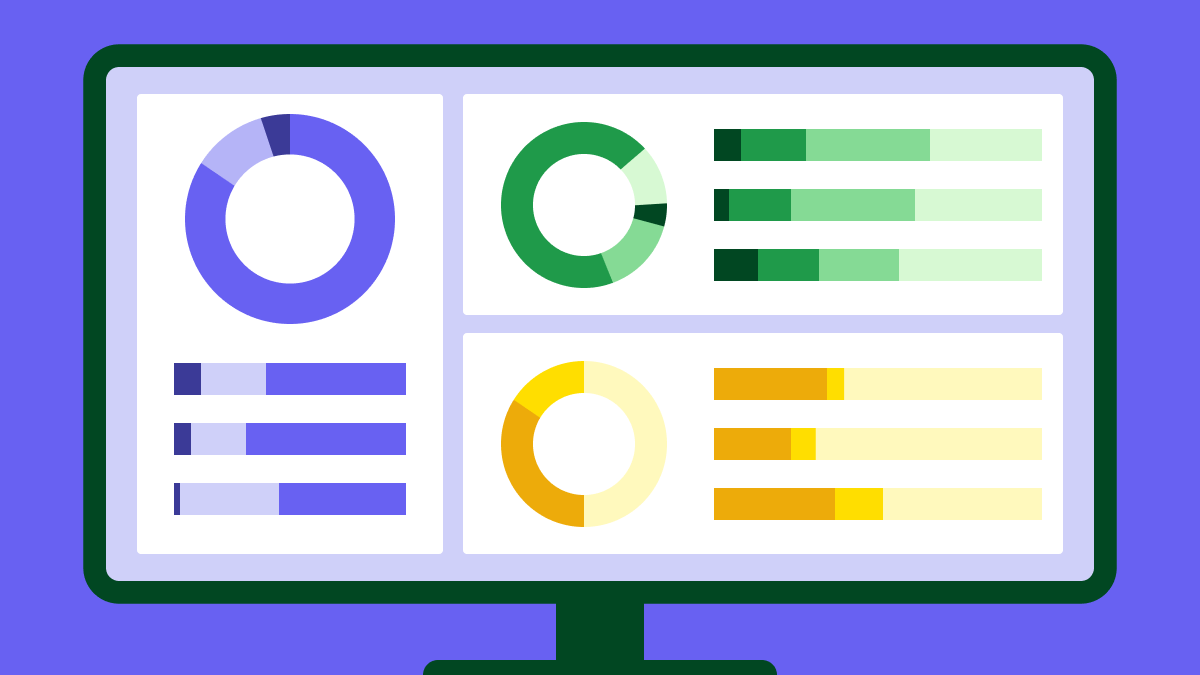Every good sales strategy starts with solid market research. It’s how you learn what customers want and where competitors fall short. Yet many time-pushed small businesses skip or rush it, just to be left guessing.
A clear market research template adds structure to data collection, helping you source valuable buyer and industry insights faster and with fewer resources.
This guide’s simple templates and tips make it easy to gather the correct data and turn it into profitable decisions on pricing, product management, user experience and more.
Why use market research templates?
Templates keep your market research methodology consistent. They’re simple step-by-step processes that make data easier to organize, trust, compare and act on.
That’s true whether you’re brainstorming for product development, analyzing competitors or sizing up a new market. More specifically, standardizing data collection with templates helps you to:
Compare insights over time and track changes in market trends and customer needs
Spot patterns and differences across different target markets or customer segments
Share findings in clear, easy-to-read formats that decision-makers can act on fast
Suppose you produce an annual market research report to profile your target audience. To keep services and content relevant, the aim is to see how your ideal customers change over time.
You could conduct the market research without or with a template:
Without market research templates | With market research templates |
You design a fresh customer survey every year, with new questions. In one survey, you ask customers what their most used feature is. In the next one, you ask them to list their top three. The resulting data is inconsistent, so you can’t make year-on-year comparisons or accurately inform your marketing content. | You ask the same questions in the same way every time. You plot five years’ worth of comparable data on a graph. It shows which features stay on top and which fluctuate in popularity. Tweaking your marketing strategy to match what matters most to customers improves engagement. |
Market research gives you the whole picture. For example, this graph shows that Feature C has become more valuable to your audience, while Feature A has lost its appeal.
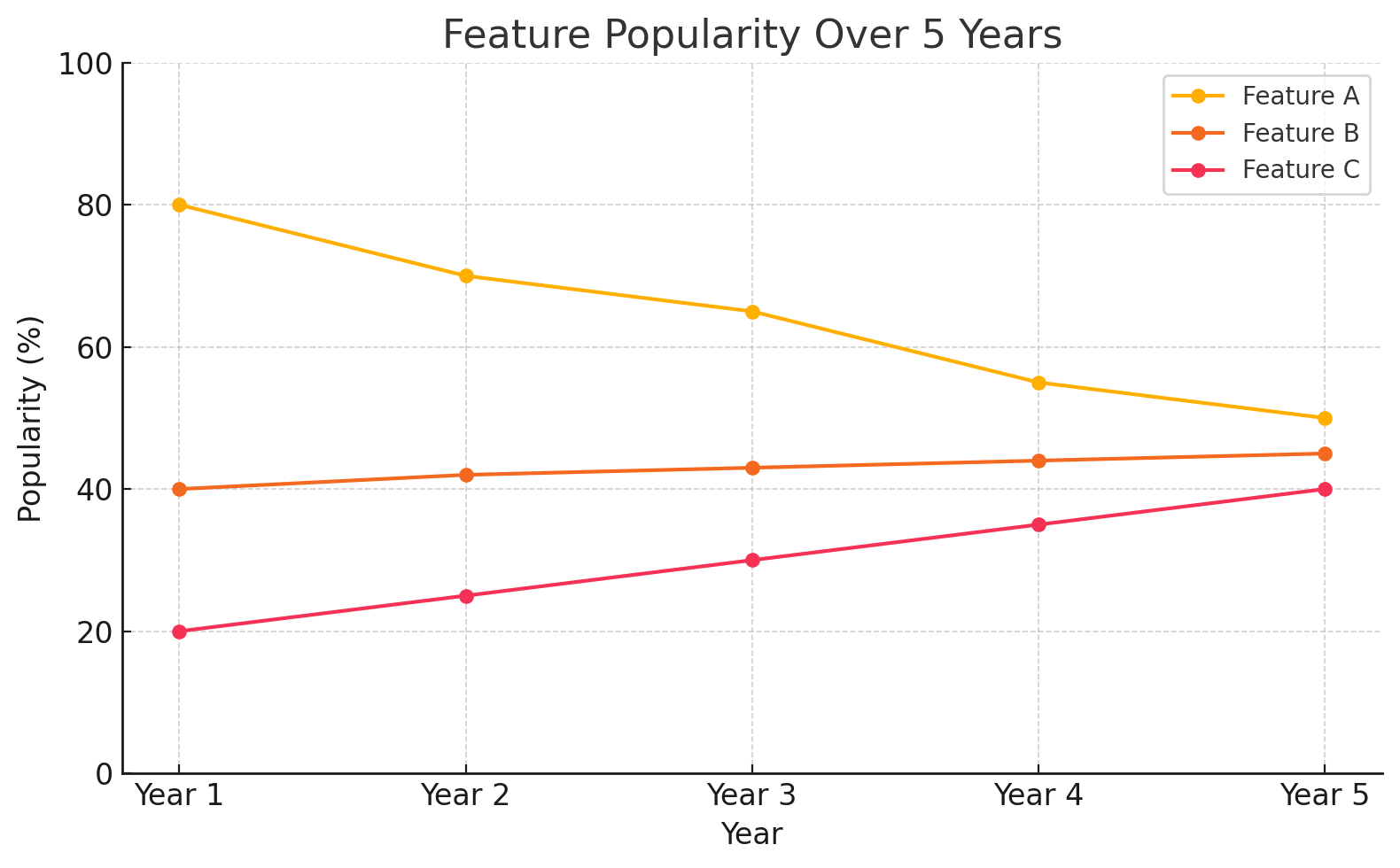
You could promote Feature C in marketing content to keep momentum or develop Feature A to make it more valuable again. Without the template’s consistency, you’d struggle to spot those trends or decide what to do next.
Ultimately, market research templates help you build results in stronger customer relations, meaning more sales and retention. That matters when you consider that just 57% of salespeople hit their targets in 2024, down from 61% the previous year.
Note: Each template supports a different stage in the market research process. For major research plans, you can combine various data types into a clear summary report for all stakeholders (e.g., market analysis, competitive landscape, customer pain points, etc.)
Our free market research template toolkit: what’s included
These four templates make market research faster and easier to act on. Use them individually or as a complete set to streamline your entire process.
1. Customer survey template: collect structured feedback at scale
Use this template to run quick market research surveys at scale. It helps you gather structured responses and spot trends in customer sentiment and decision-making.
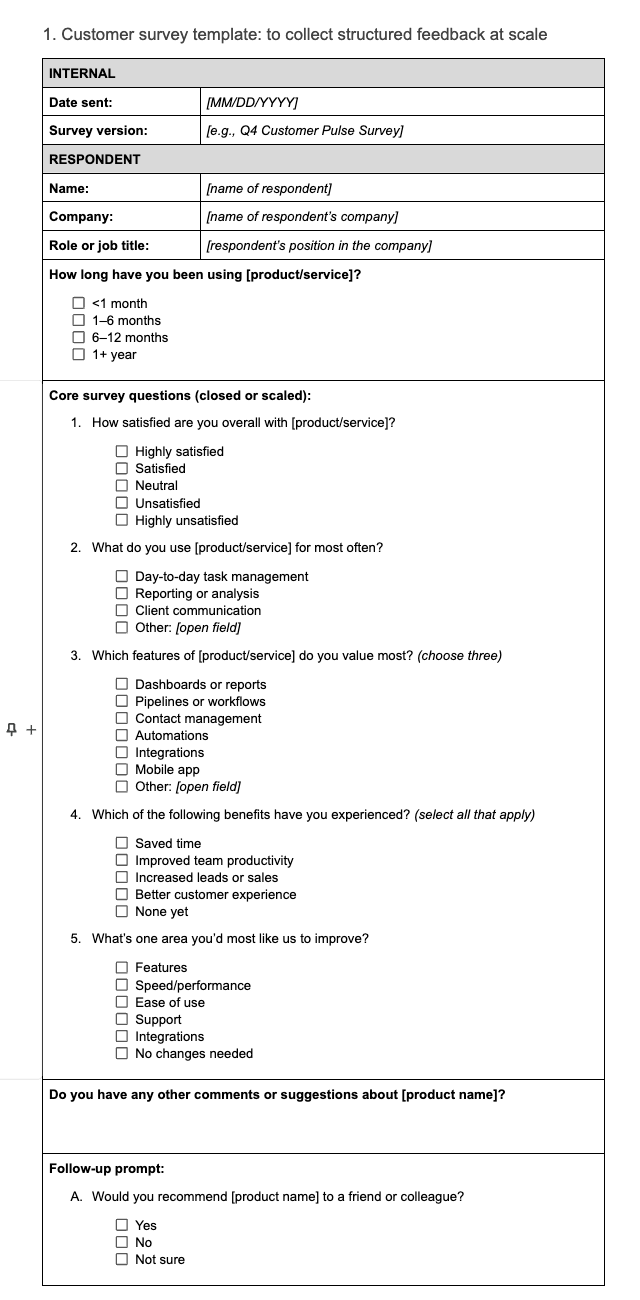
Example use cases include tracking customer satisfaction, testing new product messaging, building detailed buyer personas and more.
2. Interview or small focus group template: dig deeper into user behavior
Use this question-based template to guide one-on-one interviews or small group sessions (ideally fewer than five people). Voice of the customer research helps you explore customer motivations in real time while leaving space for unplanned follow-ups.
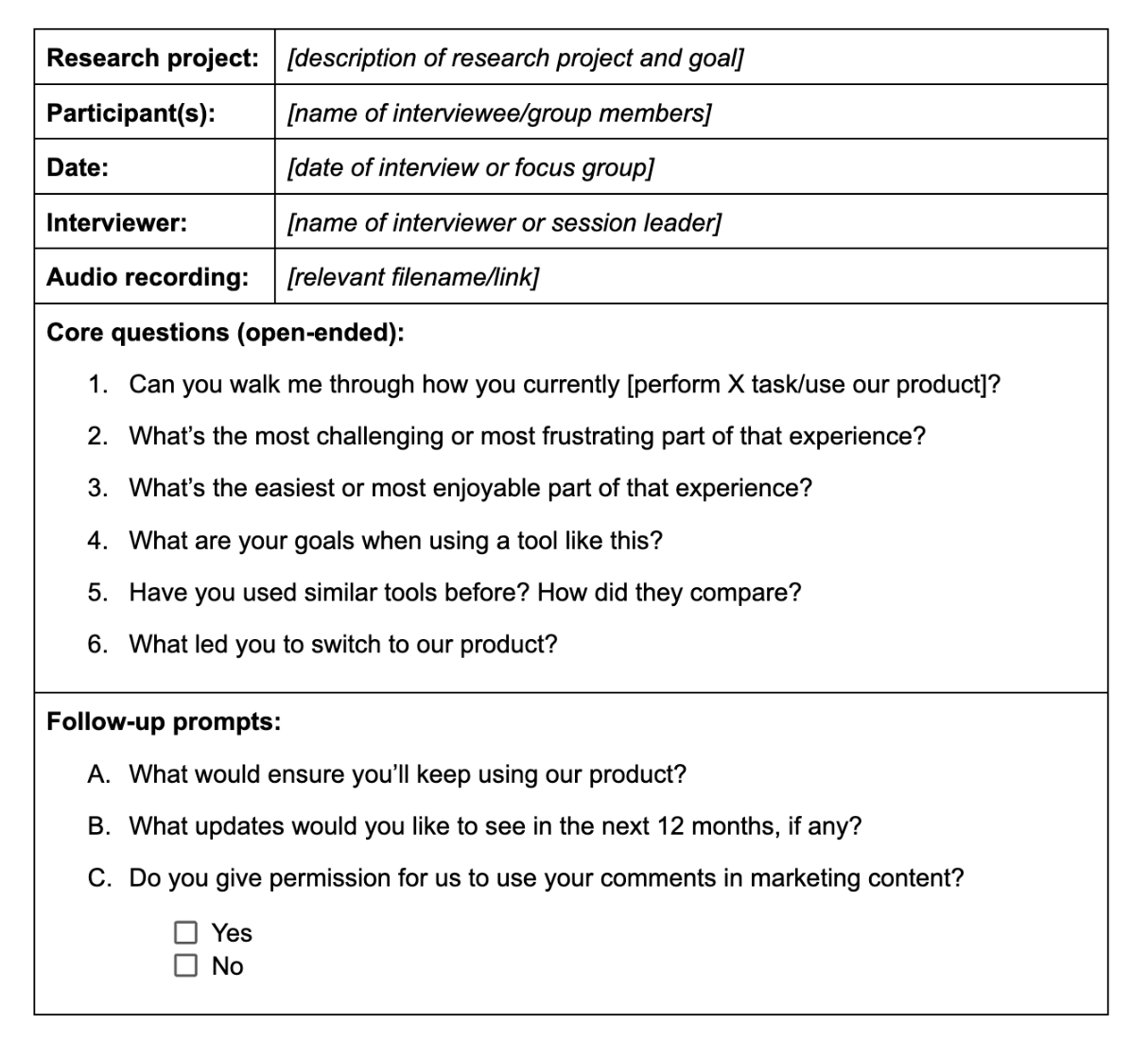
Use this template to research while onboarding new customers, collecting UI feedback, validating assumptions about your ideal customer and more.
3. Competitive analysis template: assess features or messaging in your sector
Use this analysis template to determine what makes you stand out. It will inform marketing content late in the customer journey, when buyers compare you to other options.
Take this CRM comparison page. It centralizes everything we know about how Pipedrive compares against other CRM tools, so visitors can choose software with the qualities they need.
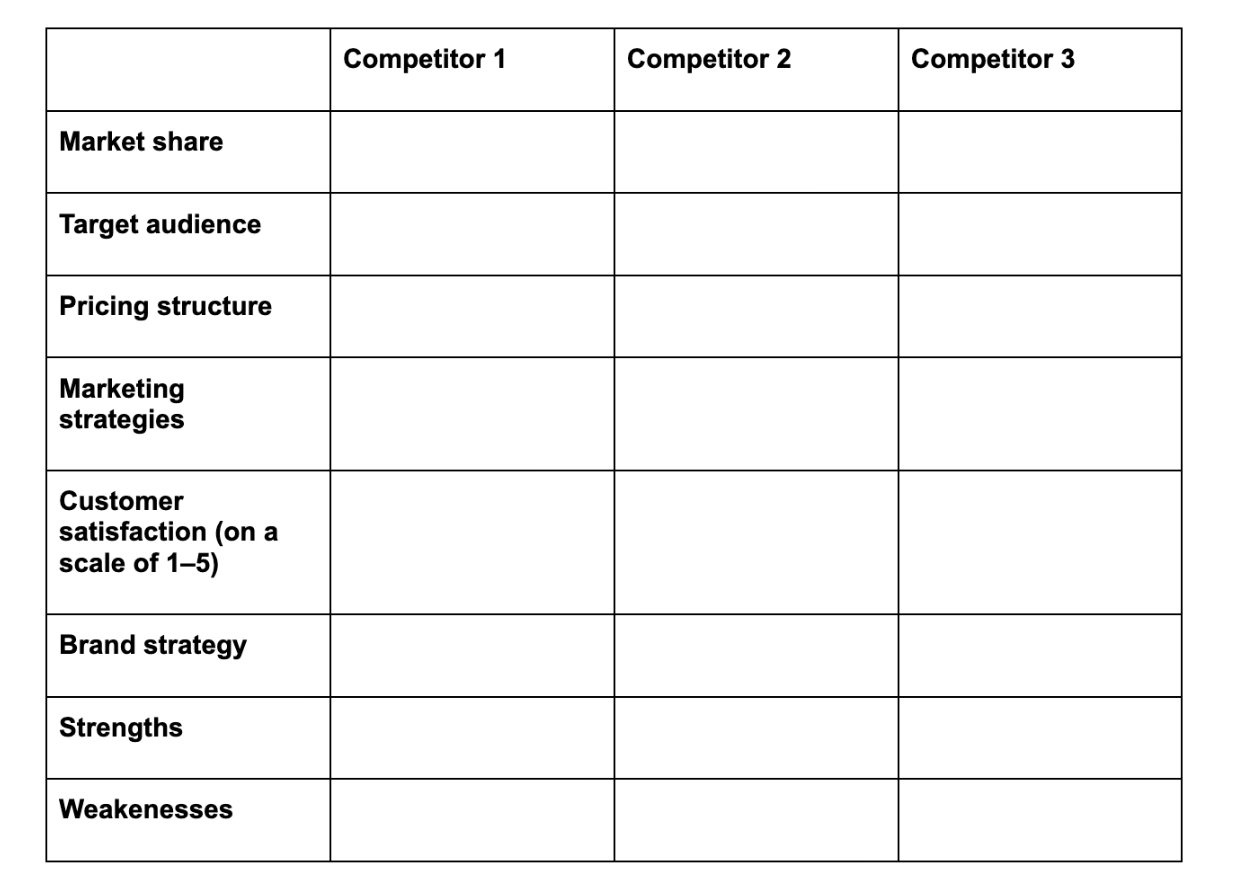
A competitive analysis template helps sharpen brand positioning, benchmark products, plan pricing strategies, perform a SWOT analysis and more.
4. Market research report template: present research findings to stakeholders
Summarize what you learn about customers in one place to make the findings easier to act on.
Add background information, research methods, data graphs and next steps to this market research analysis template to build a complete picture.

This template is handy while debriefing research teams, informing sales and marketing initiatives, updating managers and guiding rebranding.
Our report template also works as a market research template for a business plan, which is ideal for preparing a pitch deck or funding proposal. Use it to document your company’s background information, target demographic, estimated market share and pricing strategy.
Download your free Market Research Template
5 tips for using market research templates to drive better decisions
A good template makes research feel less overwhelming. The following tips will help you get meaningful metrics and insights even faster and avoid wasting time on data you don’t need.
1. Tailor templates to your audience and goal
Think of a template as a starting point, not a finished product. Make it suit your project by deciding what you want to learn and tweaking the questions or sections to match.
For instance, a pricing strategy survey might skip brand perception questions to focus on buyer motivations and dealbreakers. Likewise, a SaaS startup might include onboarding processes in its competitor analysis, while a fashion retailer would leave that out since it’s irrelevant.
2. Keep research lean and focused
Only ask for the information you need. A leaner market research strategy or template means faster results and more precise conclusions.
Research suggests it can also boost response rates. SurveyMonkey found that completion rates drop from 85% for surveys with five questions or fewer to under 20% for surveys with more than 30 questions.
To make things even easier for participants, you could use a CRM like Pipedrive to pre-fill known details from contact records, like company and location.

Preparing survey forms like this would give recipients even less to do and make the experience feel more considerate and personal.
3. Reuse templates to spot trends over time
Consistency matters when you’re measuring change. Use the same survey or research format each time so it’s easier to find patterns, whether you’re tracking customer satisfaction or competitive positioning.
For example, if customers score your service from 1-10 every quarter for two years, you’d have eight data points to plot on a graph. That’s enough to see any statistically significant spikes and lulls easily.
Note: Statistical significance means your data shows a real, meaningful difference or relationship, not just random variation. You’re more likely to achieve it with a large, consistent set of comparable data.
4. Combine qualitative and quantitative methods
Conduct market research in different ways to capture the what and the why behind buyer behavior and sentiment.
For example, you can combine a product feedback survey (quantitative) with one-on-one calls (qualitative) to understand the stories behind the scores.
If the survey shows users struggle to navigate key features initially but soon adapt, use the calls to learn how they adjusted. Then, build what you learn into your onboarding process.
5. Share your findings in ways that influence decisions
Turn your findings into clear recommendations that link to business goals – like improving a product or shifting messaging.
A strong market research report helps you communicate what you learned and what to do next in a way that everyone understands. For example, if feedback shows users find some UI language confusing, you could update the terminology to match how your audience talks.
Once you’ve collected your insights, use a CRM to keep them front-of-mind for sales and support teams. Attach survey responses to contact records in Pipedrive using the Notes tab:
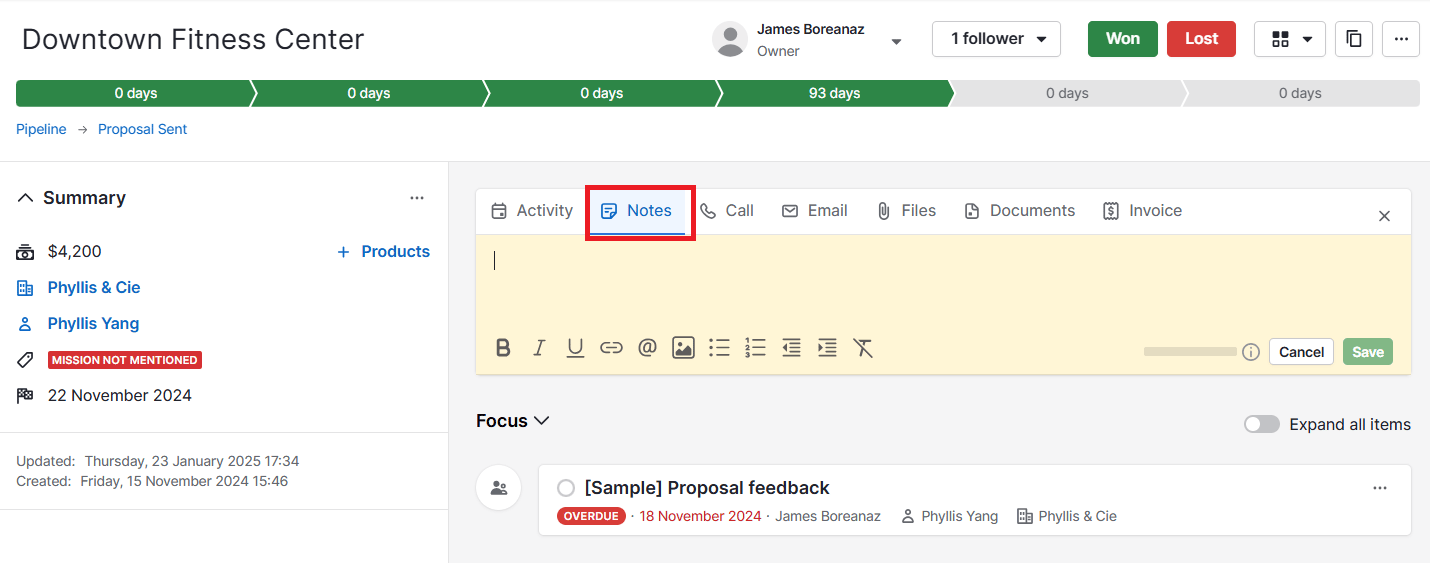
You could also upload questionnaire or survey results to the Documents tab. Adding extra context allows reps to tailor interactions in real time.
Final thoughts
Market research doesn’t need to be slow or expensive. With the right templates, you can collect reliable insights repeatedly, giving your team the confidence to make smarter, more impactful decisions.
Start with our downloadable toolkit. You can use the templates as they are or tweak them to fit your product type, audience, goals and brand voice.
You’ll save time, reduce guesswork and focus on what matters most: understanding your customers and growing your business.

